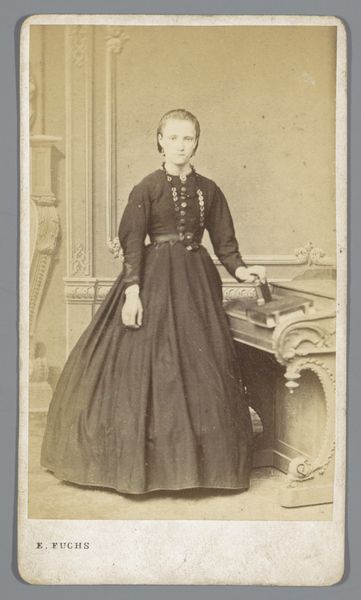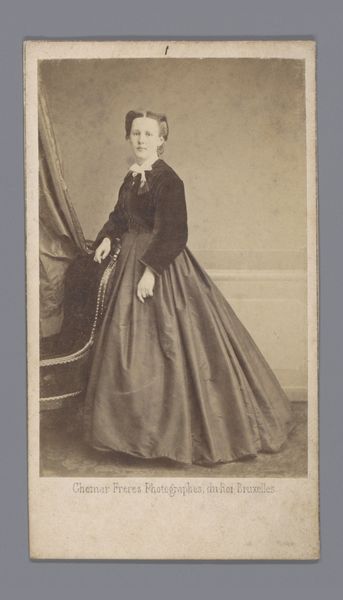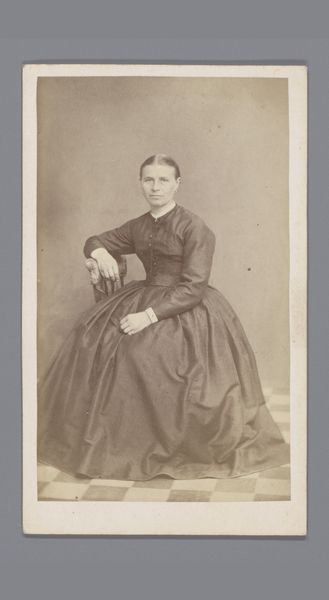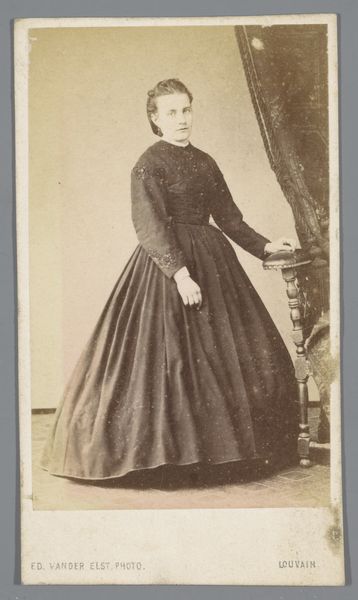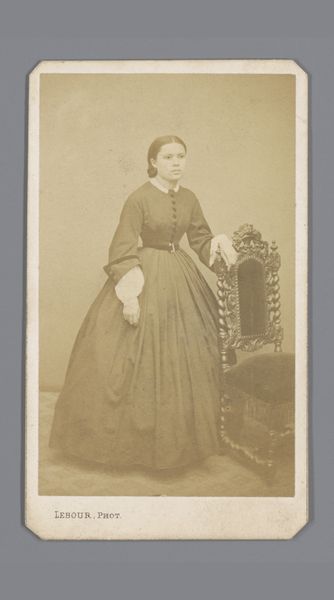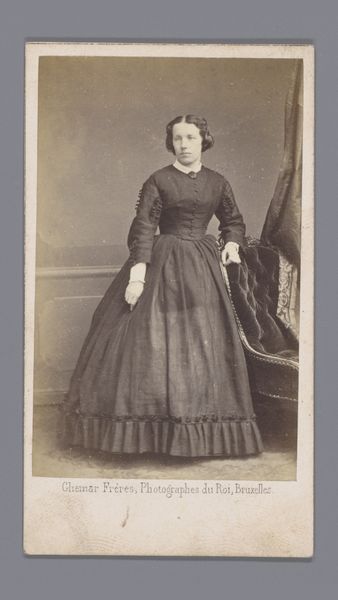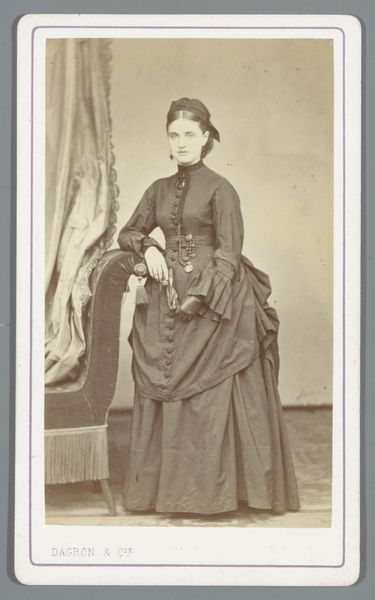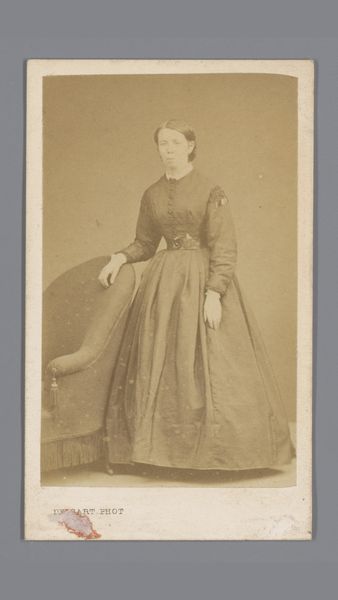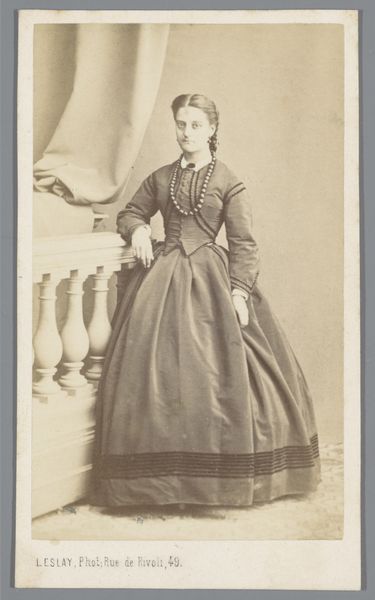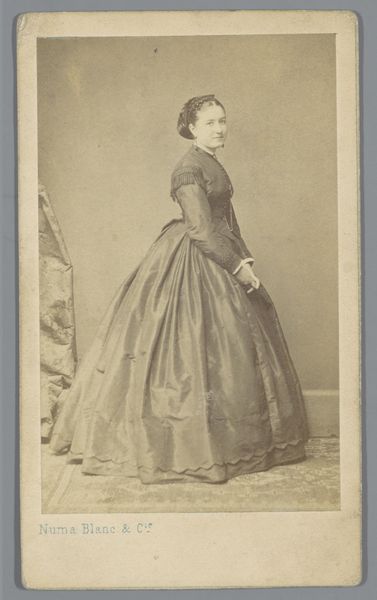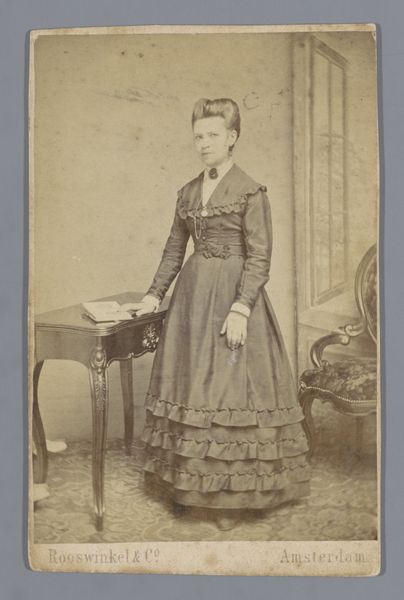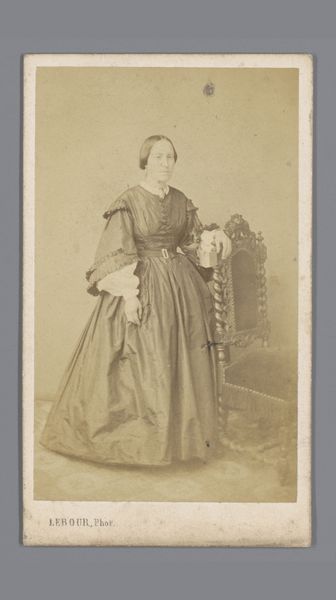
Dimensions: height 106 mm, width 61 mm
Copyright: Rijks Museum: Open Domain
Curator: Let’s discuss this photographic portrait by Achille Ernest Mouret, "Portret van een onbekende vrouw bij een stoel," created sometime between 1860 and 1888. The work is a gelatin-silver print. Editor: There is a certain quiet dignity. Her placement to the chair feels staged, like she's bracing herself, while also projecting an image of elevated society through costume and comportment. Curator: Indeed, consider how the formal conventions of photography were then developing. These early photographic studios often recreated painterly environments and themes, using backdrops and props such as this elaborately carved chair to suggest status and elegance. Mouret's inscription notes he’s a "painter of miniatures." Editor: Absolutely, that helps explain why the backdrop resembles a landscape painting. Beyond just studio practice, there's an emulation of the soft sfumato effect typical of Romantic painting, particularly around the edges of her figure and within the backdrop. Curator: And also note the laborious work behind gelatin-silver printing. Each print involves complex chemical processes to develop the image from a negative, unlike the instant capture we're accustomed to today. Skilled technicians in studios labored to make these images. These materials would’ve had different availability based on region, economic condition and global trade routes of chemicals that comprised the gelatin. Editor: The gelatin-silver process does yield incredibly subtle tonal gradations. See how it captures the texture of the dress fabric, or models her face through the careful modulation of light and shadow, constructing depth and creating an undeniable presence. The photograph almost achieves a sculptural effect! Curator: We can see how such portraits also democratized access to representational art. Families of a certain social standing, able to allocate resources for photo sittings, would commission such portraits to commemorate and represent themselves, much like earlier painted portraiture, influencing patterns of display and access. Editor: I am now quite drawn into her gaze, and impressed by how effectively the photographer utilized then-novel methods to give life to the sitter. Curator: Yes, exploring the work reveals connections among materiality, societal changes, and creative process that continue to reverberate in portraiture. Editor: Absolutely. It enriches the entire viewing experience when one considers all of the intrinsic relationships held by a work such as this.
Comments
No comments
Be the first to comment and join the conversation on the ultimate creative platform.
